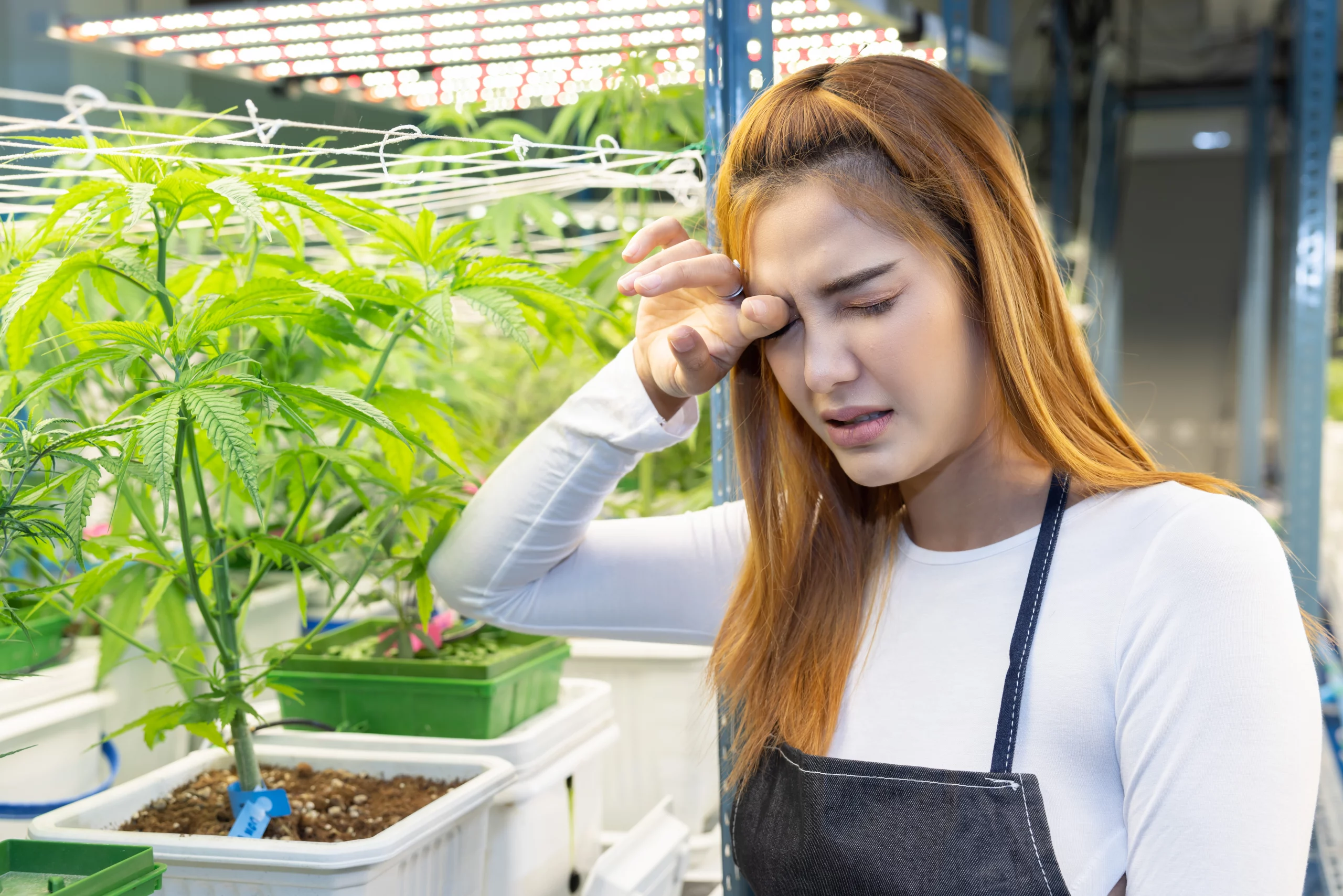
Developing a headache from weed is more common than you might think. Yet millions of people around the world also use marijuana each year to treat migraines and other severe forms of head pains. How can something that relieves pain for some people also cause the same problem in others?
There are a few theories to the process that leads to this experience. If you’ve smoked or vaped weed and experienced a headache shortly after, there are a few things you can try to avoid the same experience in the future. You may simply need a different weed strain, such as an indica instead of a sativa.
Dehydration and Smoking
One of the primary reasons that doctors and scientists believe that headaches are a common issue with weed smoking is the potential for dehydration. Smoking causes dehydration directly in the mouth and sinuses by drying up moisture, but weed, in particular, is known for causing a drying effect in the eyes as well. This can contribute to the formation of a general headache if you’re already on the verge of being dehydrated.
However, some people may find that even their best efforts to stay hydrated won’t stop the headache from happening. In cases of cannabis-induced hyperemesis, the loss of moisture due to vomiting increases the likelihood of headaches. Drinking spirits will worsen this kind of effect.
Sinus Pressure
Smoking or vaping weed can dry out the sinuses in particular. Even if they’re not dry, they may react to the irritants in the smoke and end up tight and painful. This often leads to a headache primarily felt behind the eyes and around the upper cheekbone area. It’s harder to deal with this kind of weed-induced headache because hydrating alone won’t necessarily relieve the pain. If you know you have sensitive sinuses and seem to find smoking irritating, you may want to switch to a tincture or edible product instead to prevent headache issues. This is rarely an issue with the right CBD dosage.
Vasodilation
Thanks to limited research, it’s not entirely known why they occur after some people smoke weed. There’s a good chance that the documented vasodilating effect marijuana offers may play a role. This is the same effect that gives you red eye issues and helps relieve glaucoma symptoms. Many people report head pains when they first start using any medication or substance that causes vasodilation. When the blood vessels relax in the brain, the slightly increased pressure can lead to pain. You should find yourself adapting after a few sessions and no longer developing headaches, and this kind of effect will occur even with edible recipes and other non-smoking consumption methods. CBD products aren’t known to create the same vasodilation effect.
Side Effects from Certain Strains
Some marijuana strains are more likely than others to cause headaches. Searching for a strain you’re considering and checking if other users report headaches as a side effect can save you a lot of trouble. Indica strains tend to have less of a chance of causing this side effect, but it’s often just down to the individual strain. With exploration, you should be able to find sativa varieties as well that fit your needs without triggering any pain in the eyes or temples. You won’t see headaches listed in cannabis marketing materials, so do your research on websites that allow users to report their experiences.
Preventing Headache from Weed Smocking
Start drinking extra water and hydrating about 12 to six hours before your smoking session. This will give your body plenty of time to actually absorb the water and become well-hydrated. Drinking right before you smoke or during the session won’t necessarily ward off your headache issues. Adding at least one sports drink to the mix can help balance your electrolytes, another trigger of head pain in some people.
Finally, use a water-cooled pipe or device to ensure the smoke isn’t too harsh and irritating to your sinuses and throat. It’s fun to learn how to roll a blunt, but joints and blunts are more likely to trigger a headache. Avoid mixing marijuana with other products like shrooms which can raise the likelihood of a headache as well.
Treating These Weed Headaches
Once a headache from weed has settled in, taking over-the-counter painkillers like ibuprofen or acetaminophen is likely the best treatment. You might also want to drink plenty of liquids and try lying down and keeping everything dark and quiet for a little while. Avoid smoking a different cannabis strain, even if you know it doesn’t cause a headache, since it’s unlikely to help resolve your pain at that point.
Don’t let your smoking sessions leave you in pain when weed is known for treating chronic pain and migraines. Stay hydrated and keep some OTC painkillers on hand to deal with these troublesome side effects when they do pop up.






